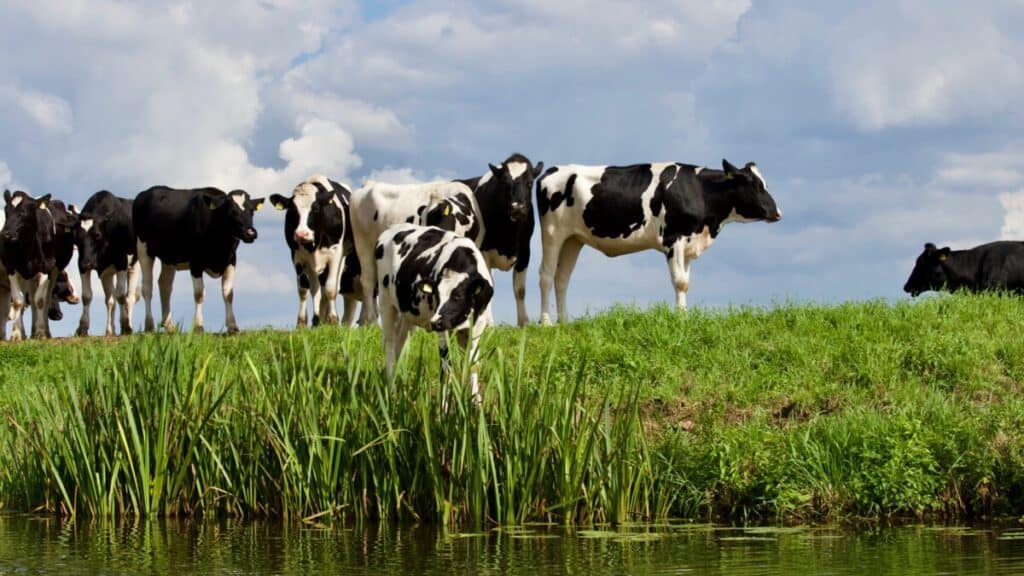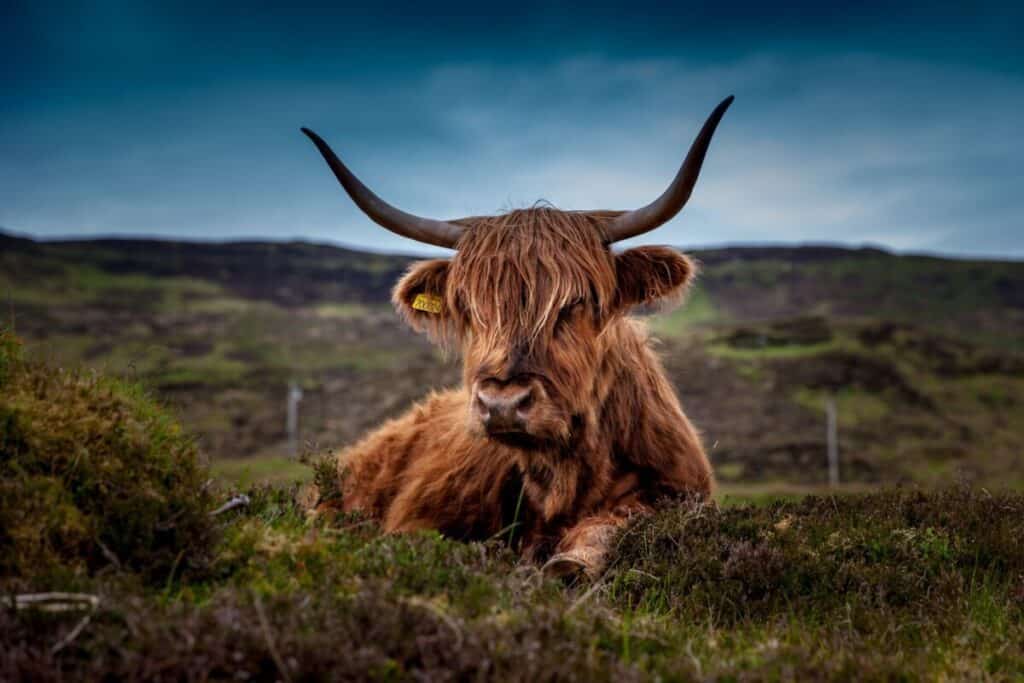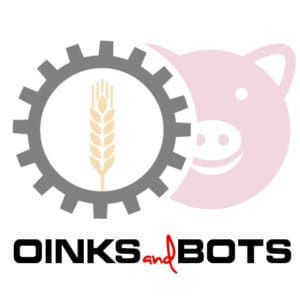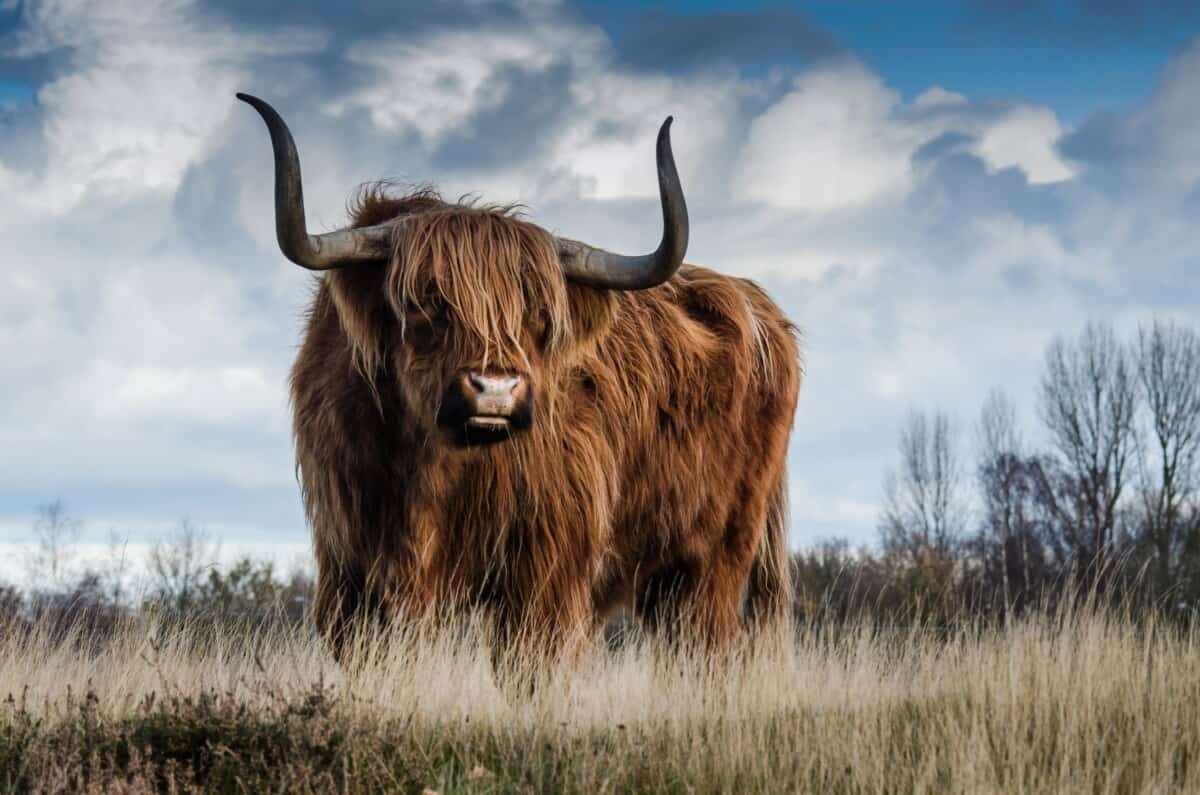Climate Change in General
Climate change is the human-induced observed and predicted long-term changes in average climate indicators, as well as climate variability, including anomalies such as droughts, severe storms and floods. We explored in a previous article of how you can do your part to help fight climate change in a more general sense.
The climate is changing, and it is happening right now. This is not about a distant phenomenon that will take place sometime in the future, and not only about a rise in temperature.
In some parts of the world, annual rainfall is expected to decrease over the long term, while in other regions, fluctuations in rainfall and temperature will noticeably affect the growing season of some plants.
In other places, the annual amount of precipitation may remain the same, but it can fall out at large intervals, in the form of much stronger and shorter rainfalls, causing increased droughts and floods. The intensity of strong storms and their varieties, hurricanes, may increase.
The potential impacts of climate change are diverse and vast, and therefore the prevention of these effects has become a high priority on the global development agenda.
Although the Earth’s climate has fluctuated before, in the last 100 years this has been happening much more often. At the same time, the average surface temperature increased by about 0.6–0.7 ° C (1.2–1.4 ° F).
This may not seem like much, but since the climate became a “non-linear” dynamic system, even slight temperature changes can cause a number of cascading effects.
Climate Change Affecting Cattle
High temperature and relative humidity are the main factors causing heat stress in cattle. Solar energy enhances it if the animals are not adequately protected from sunlight.
When heat sets in, the difference between the ambient temperature and the body temperature of the animal decreases, and the significance of the mechanism of heat transfer (sweat production and increased respiration rate) increases.
In hot weather, the cow’s body may not be able to cope with heat loss, and body temperature rises. Then heat stress occurs.
It affects mainly productivity, fat content in milk, feed intake, reproductive functions and often weight. If hypothermia occurs before artificial insemination, a decrease in reproductive ability is observed, which can last even after a drop in temperature.
The more food cattle consumes; the more heat it produces. Therefore, high-performance cattle are more susceptible to heat stress than low-productivity ones.
Cattle, as mammals, have a very constant body temperature, and in the heat they can raise it very slightly. And the fact that this mechanism very quickly runs across the border was determined by North American scientists in a new study.
Studying the behavior of cattle during standing and lying, depending on body temperature and concluded that just with a temperature increase of only 0.5 ° C, the animals stood much more and lay less.
In this way, the cattle tried to release more heat, because during standing, a large area of the body was blown and there was a greater chance due to the movement of air to give away more heat.
But when the cattle were lying less, this had a negative effect on the process of chewing and burping, and on the use of energy. Scientists want to use data from this experience in order to determine stressful conditions for cattle in a timely manner due to altered conditions in the room, so that they can respond quickly and help animals.
Under heat stress, of course, other changes in the behavior of animals are also observed, such as decreased motor activity, fewer approaches to the feed table, fewer manifestations of coming to the hunt, animals belch less, breathe heavily, stick their tongue out of their mouth, and consume much less food. but their need for energy increases, the release of mineral substances increases, and less saliva as a buffer substance enters the rumen.
Heat Stress and its Effect on Cattle
When the temperature rises above 24 ° C, and the humidity is more than 70%, thermal stress begins in cattle. Heat stress in cattle can be chronic throughout the summer. These intense bursts of hot weather can be especially fatal for highly productive cattle that are not adapted to hot weather and can be costly in many ways.
Modern breeds of cattle have an ultra-intense metabolism, and this is an increased heat release during the synthesis of milk and the processes of digestion. And if, due to climatic conditions, the cow’s body is not able to give this heat out, the animal suffers from heat stress.
Studies conducted at the University of Georgia (USA) several years ago found a lag of about two days between stressful heat conditions and signs of heat stress in cattle. To reduce productivity (from 15 to 40%), a decrease in milk fat and immediately invisible indicators such as decreased fertility and depression of the immune system are added.
The effects of hot and humid weather reduce the economy of dairy production. Indicators of heat stress are: reduced feed intake, reduced xattle activity, they stand for more time near drinking bowls, rapid breathing is observed.
During hot weather, feed intake is reduced, as it is a protective mechanism to reduce metabolic heat, and feed energy is used less efficiently to synthesize milk. At temperatures above 24 ° C, the consumption of CB decreases by 3.3% with each degree.
There are many activities aimed at changing the conditions of feeding, which can help significantly reduce heat stress in animals. They include: environmental management, diet management, feed table management.
Feeding Cattle in Hot Climates
Only in fresh air can high-quality milk be obtained. Cattle cannot quickly dissipate body heat, as humans do. Cattle sweat more slowly, at 10 percent of a human’s sweating rate.
Therefore, you should use mechanical means to help your animals maintain body temperature within the comfort zone. Shading, additional cooling from fans and sprinklers or evaporate coolers is one of the most important and most effective ways to improve the environment during the heat.
It is important to install water sprayers in the form of fog to wet only the front third of the cow, which prevents the development of mastitis. Irrigation of water of cattle together with too strong forced ventilation can lead to pneumonia, therefore it is necessary to get these subtleties in the organization of keeping animals.
At the same time, a timer is set on the pump to wet the cattle every 5-7 minutes, and not continuously, to give time for your cattle to cool by evaporating water.
Fans and sprinklers must operate in a specific sequence. Sprayers are positioned so that water does not get on the feed to prevent spoilage.
Water is the most important nutrient for a cow. Provide extra drinkers for the heat period. The front of the drink should be at least 0.75 m drinkers per cow, while at the same time 20% of the cattle in the group are watered. At the same time, water pipes have a diameter of at least 75 mm, with sufficient pressure to provide 20 liters per animal per minute, especially during peak demand.
Water should always be available, should be fresh and clean. Drinking bowls should be cleaned regularly, and also they should be conveniently located, adequate in size and speed of water supply. Observe animal behavior: a large number of cattle standing around the drinkers in anticipation indicates a lack of water.
Water consumption increases sharply with increasing temperature due to loss from sweating and because of the increased frequency of respiration. Typically, you need 200-250 liters per animal per day of drinking water in hot weather – almost twice as much as on normal days. Cooling water to a preferred temperature of 21 to 27 ° C has also been shown to be effective in increasing its consumption during the heat.

Changes in feed intake will help cattle cope with heat stress, but this has a much lesser effect on alleviating heat stress than changes in the environment. Develop a summer feeding program to ensure that cattle remain healthy and productive despite problems with hot weather.
There are a number of strategies that farm professionals can take to reduce the effects of heat stress. Cattle reduce feed intake at this time by more than 10-12%. Therefore, the diet should contain more energy to provide enough energy to maintain milk yield.
An increase in energy in the diet can be achieved by increasing concentrates (grains) and reducing the main dish in the diet. However, an increase in the number of concentrates of more than 55-60% of the dry matter of the diet is risky and can lead to a decrease in the milk fat content and acidosis.
Starch levels must be kept below 25% to prevent acidosis. Fat with a high energy content (about 2.25 times more than carbohydrates) does not increase the level of starch in the diet (minimizing scar acidosis), and can also reduce the heat load in the summer.
Added fat (2-3%) often increases the percentage of milk fat. The fat content should not exceed 5-6% of the dry matter of the diet. The rule that technologists observe in this case: 1/3 should be in fats from feed, 1/3 of added vegetable fats and 1/3 of protected fats. Also, the amount of crude protein in summer diets should be increased due to the smaller amount of food eaten.
Recent studies show that the diet during hot weather should not contain more than 17% of the crude protein of which the breakdown protein is not more than 62%. Slightly reduce the level of fiber, but the NIR is not less than 27-30% of the SV diet, while chopped hay is introduced into the general mixture. During this period, to improve the appetite offer more delicious high-quality feed.
Use juicy feed (silage, beer pellet, etc.) for the attractiveness of the diet, but the humidity of the diet should be no more than 50-55%, because there is a risk of rapid spoilage of the feed mixture.
The use of the “Live Protein” carbohydrate pro-biotic feed stimulates the appetite of cattle, increases the effectiveness of the rumen, makes the diet attractive, tasty and moderately moist, and reduces the sorting of the feed.
A decrease in fiber levels can lead to acidosis, as cattle chew less, which reduces the amount of saliva. The situation is aggravated by the fact that the buffer capacity of saliva decreases during heat stress, because cattle lose electrolytes with sweat (potassium), through the kidneys (sodium, to balance the loss of potassium), and through increased hyperventilation of the lungs (shortness of breath).
It is recommended that during periods of heat stress, an increase in potassium to 1.2-1.5% and sodium to 0.4-0.6% of the dry matter of the diet. Sodium can be introduced by giving an additional amount of salt or sodium bicarbonate (0.75-1.0% SV diet).
In addition to minerals and buffers, there are a number of other feed additives that can help cattle with stress in hot weather. These include modifiers, which alter the balance between different microbial populations in the rumen and the proportions of VFAs (volatile fatty acids) they produce.
Any product that enhances the effectiveness of the stomach and stabilizes its environment should prevent stress during hot weather. Elevated doses of vitamins (A, E, carotene) and trace elements (copper, zinc, selenium and cobalt), the introduction of vitamins B5, C, B4 (protected) can potentially improve the condition of cattle in the hot period.
Changing the feeding schedule can help your cattle get adequate feeding. In hot weather, cattle prefer to eat at night and after milking. Feeding from 60 to 70 percent of the diet between 18 p.m. and 8 a.m. successfully increases milk production during the heat.
The effect of heat generated during the digestion of feed during the evening and at night will be the lowest. In addition, feed will remain fresh in the feeder longer at night than during a hot day. Increasing the number of feeds ensures that the feed is fresh, which increases the dry matter intake of the diet.
All of the above measures should be taken before the onset of hot weather in order to avoid the inevitable decline in productivity. Intensive practices can reduce the effect of hot weather on milk production and production profitability. Preparing for hot weather is necessary before it arrives, and remember that cattle suffer from heat stress at lower temperatures than humans. If the weather is comfortable for you, this does not mean that it is comfortable for your cattle.
Cattle Feeding Management
The greatest limitation of milk production at high air temperatures is sufficient feed intake. Its decrease with increasing temperatures means that the density of all nutrients in the diet needs to be increased in order to preserve milk production. The main management efforts should be directed to activities that promote feed intake.
There are several management techniques to ensure the comfort of animals in the heat:
- Food should be accessible to animals, which means that there should be enough space at the feed ttough.
- Clean the feed trough regularly.
- Regularly analyze the diet to ensure its exact formulation.
- Harvest and purchase only high-quality feed.
- Minimize sudden changes in diet to avert appetite loss.
- Feed a mixed diet to ensure a stable intake of balanced feed with minimal sorting.
To minimize heat generation, most of the feed should be fed during the cool time of the day (for example, between the fourth and sixth hours of the morning and between the ninth and eleventh hours of the evening). Distribute food more often so that it does not heat up.
8 Questions to be answered daily during the dry season:
- Is the feeding trough empty?
- Are cattle kept for too long in the drive, preventing them from being fed for a long time?
- Can cattle get to feed? Is feed topped often?
- Is the feed / silage hot or bad? Does the food smell sour?
- Is the ration mixed properly?
- Do all cattle have enough space at the feeding trough?
- Have your cattle adapted to changes in feeding patterns (do they consume more feed at night, less during the day)?
- What does a general mixed diet look like (uniformity of the mixture, particle size, sorting, ration moisture, adding water)?
Good management can reduce the impact of heat on productivity and profitability. Get ready for the hot weather before it arrives. And remember that in cattle, overheating occurs at lower temperatures compared to humans.
Heat Stress and Cattle Physiology
Along with adjusting rations, manufacturers additionally use fans and various cooling systems, but often milk production continues to fall. Iowa State University scientists have decided to find out the reason.
A decrease in milk productivity is observed in a period coinciding with a decrease in feed intake. Therefore, it is the change in the feeding behavior of cattle that is considered the main reason for the decrease in milk yield. Reducing feed intake is the natural thermoregulatory response of cattle to divert excess heat production during digestion.
Improving the quality of the diet helps cattle get the most out of his consumption. But steps aimed at better feed intake have the opposite effect, because rumination generates a significant amount of heat. If the lost milk is a consequence of a decrease in consumption, which, in turn, is the body’s response to an increase in ambient temperature, is it really impossible to solve the problem of a decline in productivity during the heat?
The observation was carried out in two groups of cattle: one group created comfortable environmental conditions, and the second was kept under heat stress, but their diet corresponded to the needs during overheating.
If consumption were the only reason for the decline in productivity, the two groups would have similar results. However, scientists noticed that a decrease in consumption of only 35–50% affects a decrease in milk productivity. The rest are other factors that may be potential goals for optimizing feeding and management.
What are these factors? Cattle are known to experience changes in nutrient utilization during heat stress, including changes in the metabolism of fat, glucose and protein. More fat is deposited in the form of adipose tissue, and carbohydrates such as glucose are used for other functions instead of milk production (loss of milk yield).
It turns out that the main hormone that is involved in metabolic changes is insulin. In fact, scientists came to the conclusion that it plays a decisive role in the susceptibility of heat stress and counteraction to it. Therefore, any feeding strategies aimed at supporting and increasing insulin activity can increase the ability of dairy cattle to cope with heat stress.
Another reaction of the animal organism is overheating: the blood flow from the internal organs changes, moving towards the surface of the skin (thermoregulatory response), which leads to a deterioration in intestinal health (increased permeability). This is especially important for cattle with acidosis. During heat stress, the intestine takes a double blow.

Why take care of ruminant intestines? Nutrient absorption cannot occur in the diseased intestines. Moreover, scientists at Iowa State University suggest that it is the “leaky” intestine that can cause some classic metabolic diseases, including ketosis.
Since both organs should work optimally for maximum performance, the feeding strategy should be directed to the intestine.
So, recent performance data on overheating has shown that reduced feed intake plays a lesser role than previously thought. Scientists have found that a healthy intestine is crucial. And these are new opportunities for management under thermal stress.
Reducing Heat Stress on Cattle
The influence of heat stress is multifaceted and significantly affects the economy. Therefore, the implementation of appropriate measures to minimize heat stress for the cattle pays for itself and allows you to make it possible for animals to feel good while lying down.
Very simple activities often help. It is important to start them in time and execute them qualitatively throughout the entire hot period. Here are some ways to keep and feed cattle to reduce heat stress:
Stress avoidance
Avoiding unnecessary stress should be the first measure. Common sources of stress are flies or inadequate shade from the sun.
Adequate water supply
Ensuring drinking bowls that are accessible to each animal, good quality water in sufficient quantities from clean drinking bowls or troughs.
Ensuring air movement
Open the side walls, gates and doors, if possible – ventilation holes on the roof, perforated plates on the gables. This will help keep the cow shed cool at night if you need to house your cattle.
Forced ventilation
Place slow fans with a diameter of 1.2-1.5 m in a row parallel in the waiting area in front of the milking parlor or in front of the milking machine.
Cooling cattle with water
Only when the air temperature rises above 24 ° C! Large-drop spraying or showering with 5-minute irrigation intervals and 10-minute breaks, humid air should be able to move, but too strong forced ventilation can lead to pneumonia.
Reducing thermal radiation from the roof of the barn
If you have insulating roofing, it may be worth looking at removing them for the summer as the insulated roof can trap the heat inside the cattle shed and this can cause huge stress to your herd.. In the fields, make sure there is enough shade.
Increased supply of mineral feed and feed salt
Somewhere by 10%, additional licks.
The use of sodium bicarbonate (soda) with a buffering effect
Sodium bicarbonate from 150 to 300 g per animal per day, other products in accordance with the manufacturer’s instructions.
Live yeast
Stabilization of conditions in the rumen
Reduce the proportion of fiber in the diet
Without violating the required ratio of fiber to concentrates. If unsure, read my article on recommended daily amounts of nutrients for both dairy and beef cattle.
Increased dietary energy density
Rumen-stable fats, glucoplastic energy carriers such as propylene glycol and glycerin, depending on the product and manufacturer’s instructions, from 150 to 800 g per animal per day.
Stimulating feed intake
Repeatedly pushing feed on the feed table, distributing feed two or more times a day.
Avoid reheating
High-quality, highly nutritious haylage, preservatives, for example, potassium sorbate in an amount of 400 g per tonne, acids or a mixture of acids in a dosage in accordance with the manufacturer’s recommendations and feed legislation (note: use the recommendations for the use of DLG feed additives)
Reducing oxidative stress
Giving vitamin E in an amount of 100 mg per animal per day, selenium, beta-carotene.
Conclusion
A summer climate with high temperatures is often an unrecognized problem, especially for highly productive animals, and it leads to economic losses. Analysis of control milking data reveals some effects of heat. From a temperature of 24 ° C and humidity above 70%, cattle begin to heat stress.
The behavior of cattle can determine their discomfort. Measures aimed at changing the conditions of feeding help significantly reduce heat stress in animals. A prerequisite for the success of all these actions is timely action before the onset of heat stress.

